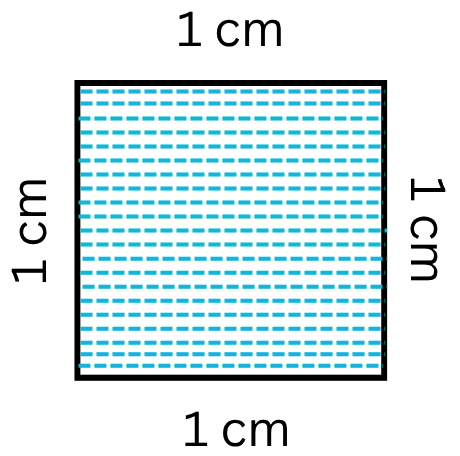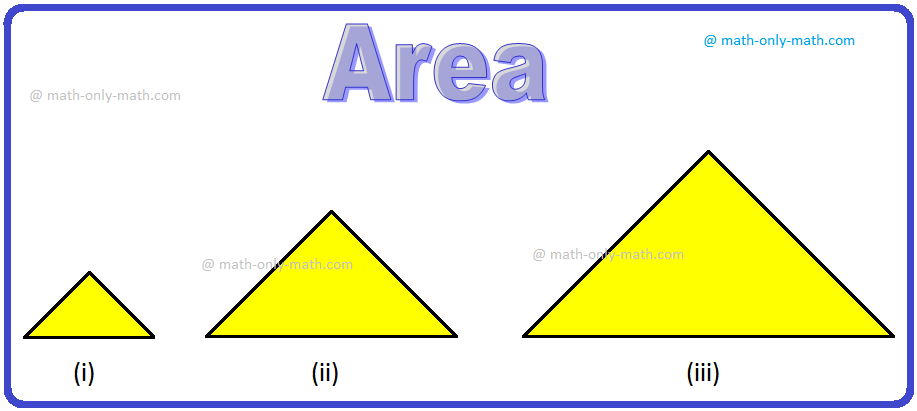Subscribe to our ▶️YouTube channel🔴 for the latest videos, updates, and tips.
Home | About Us | Contact Us | Privacy | Math Blog
General Form and General Term of a Geometric Progression
We will discuss here about the general form and general term of a Geometric Progression.
The general form of a Geometric Progression is {a, ar, ar2, ar3, ar4, ............}, where ‘a’ and ‘r’ are called the first term and common ratio (abbreviated as C.R.) of the Geometric Progression.
The nth or general term of a Geometric Progression
To prove that the general term or nth term of a Geometric Progression with first term ‘a’ and common ratio ‘r’ is given by tn = a ∙ rn−1
Proof:
Let us assume that t1, t2, t3, t4, ................., tn, ............... be the given Geometric Progression with common ratio r. Then t1 = a ⇒ t1 = ar1−1
Since t1, t2, t3, t4, ................., tn, ............... is a Geometric
Progression with common ratio r, therefore
t2t1 = r ⇒ t2 = t1r ⇒ t2 = ar ⇒ t2 = ar2−1
t3t2 = r ⇒ t3 = t2r ⇒ t3 = (ar)r ⇒ t3 = ar2 = t3 = ar3−1
t4t3 = r ⇒ t4 = t3r ⇒ t4 = (ar2)r ⇒ t4 = ar3 = t4 = ar4−1
t5t4 = r ⇒ t5 = t4r ⇒ t5 = (ar3)r ⇒ t5 = ar4 = t5 = ar5−1
Therefore, in general, we have, tn = arn−1.
Alternate method to find the nth term of a Geometric Progression:
To find the nth term or general term of a Geometric Progression, let us assume that a, ar, ar2, ar3, a4, .......... be the given Geometric Progression, where ‘a’ is the first term and ‘r’ is the common ratio.
Now form the Geometric Progression a, ar, ar2, ar3, a4, ......... we have,
Second term = a ∙ r = a ∙ r2−1 = First term × (Common ratio)2−1
Third term = a ∙ r2 = a ∙ r3−1 = First term × (Common ratio)3−1
Fourth term = a ∙ r3 = a ∙ r4−1= First term × (Common ratio)4−1
Fifth term = a ∙ r4 = a ∙ r5−1 = First term × (Common ratio)5−1
Continuing in this manner, we get
nth term = First term × (Common ratio)n−1 = a ∙ rn−1
⇒ tn = a ∙ rn−1, [tn = nth term of the G.P. {a, ar, ar2, ar3, ar4, ..........}]
Therefore, the nth term of the Geometric Progression {a, ar, ar2, ar3, .......} is tn = a ∙ rn−1
Notes:
(i) From the above discussion we understand that if ‘a’ and ‘r’ are the first term and common ratio of a Geometric Progression respectively, then the Geometric Progression can be written as
a, ar, ar2, ar3, ar4, ................, arn−1 as it is finite
or,
ar, ar2, ar3, ar4, ................, arn−1, ................ as it is infinite.
(ii) If first term and common ratio of a Geometric Progression are given, then we can determine its any term.
How to find the nth term from the end of a finite Geometric Progression?
Prove that if ‘a’ and ‘r’ are the first term and common ratio of a finite Geometric Progression respectively consisting of m terms then, the nth term from the end is arm−n.
Proof:
The Geometric Progression consists of m terms.
Therefore, nth term from the end of the Geometric Progression = (m - n + 1)th term from the beginning of the Geometric Progression = arm−n
Prove that if ‘l’ and ‘r’ are the last term and common ratio of a Geometric Progression respectively then, the nth term from the end is l(1r)n−1.
Proof:
From the last term when we move towards the beginning of a Geometric Progression we find that the progression is a Geometric Progression with common ratio 1/r. Therefore, the nth term from the end = l(1r)n−1.
Solved examples on general term of a Geometric Progression
1. Find the 15th term of the Geometric Progression {3, 12, 48, 192, 768, ..............}.
Solution:
The given Geometric Progression is {3, 12, 48, 192, 768, ..............}.
For the given Geometric Progression we have,
First term of the Geometric Progression = a = 3
Common ratio of the Geometric Progression = r = 123 = 4.
Therefore, the required 15th term = t15 = a ∙ rn−1 = 3 ∙ 415−1 = 3 ∙ 414 = 805306368.
2. Find the 10th term and the general term of the progression {14, -12, 1, -2, ...............}.
Solution:
The given Geometric Progression is {14, -12, 1, -2, ...............}.
For the given Geometric Progression we have,
First term of the Geometric Progression = a = 14
Common ratio of the Geometric Progression = r = −1214 = -2.
Therefore, the required 10th term = t10 = ar10−1 = 14(-2)9 = -128, and, general term, tn = arn−1 = 14(-2)n−1 = (-1)n−12n−3
● Geometric Progression
- Definition of Geometric Progression
- General Form and General Term of a Geometric Progression
- Sum of n terms of a Geometric Progression
- Definition of Geometric Mean
- Position of a term in a Geometric Progression
- Selection of Terms in Geometric Progression
- Sum of an infinite Geometric Progression
- Geometric Progression Formulae
- Properties of Geometric Progression
- Relation between Arithmetic Means and Geometric Means
- Problems on Geometric Progression
11 and 12 Grade Math
From General Form and General Term of a Geometric Progression to HOME PAGE
Didn't find what you were looking for? Or want to know more information about Math Only Math. Use this Google Search to find what you need.
Recent Articles
-
Volume of a Cuboid | Volume of Cuboid Formula | How to Find the Volume
Jul 20, 25 12:58 PM
Cuboid is a solid box whose every surface is a rectangle of same area or different areas. A cuboid will have a length, breadth and height. Hence we can conclude that volume is 3 dimensional. To measur… -
5th Grade Volume | Units of Volume | Measurement of Volume|Cubic Units
Jul 20, 25 10:22 AM
Volume is the amount of space enclosed by an object or shape, how much 3-dimensional space (length, height, and width) it occupies. A flat shape like triangle, square and rectangle occupies surface on… -
Worksheet on Area of a Square and Rectangle | Area of Squares & Rectan
Jul 19, 25 05:00 AM
We will practice the questions given in the worksheet on area of a square and rectangle. We know the amount of surface that a plane figure covers is called its area. 1. Find the area of the square len… -
Area of Rectangle Square and Triangle | Formulas| Area of Plane Shapes
Jul 18, 25 10:38 AM
Area of a closed plane figure is the amount of surface enclosed within its boundary. Look at the given figures. The shaded region of each figure denotes its area. The standard unit, generally used for… -
What is Area in Maths? | Units to find Area | Conversion Table of Area
Jul 17, 25 01:06 AM
The amount of surface that a plane figure covers is called its area. It’s unit is square centimeters or square meters etc. A rectangle, a square, a triangle and a circle are all examples of closed pla…






New! Comments
Have your say about what you just read! Leave me a comment in the box below. Ask a Question or Answer a Question.